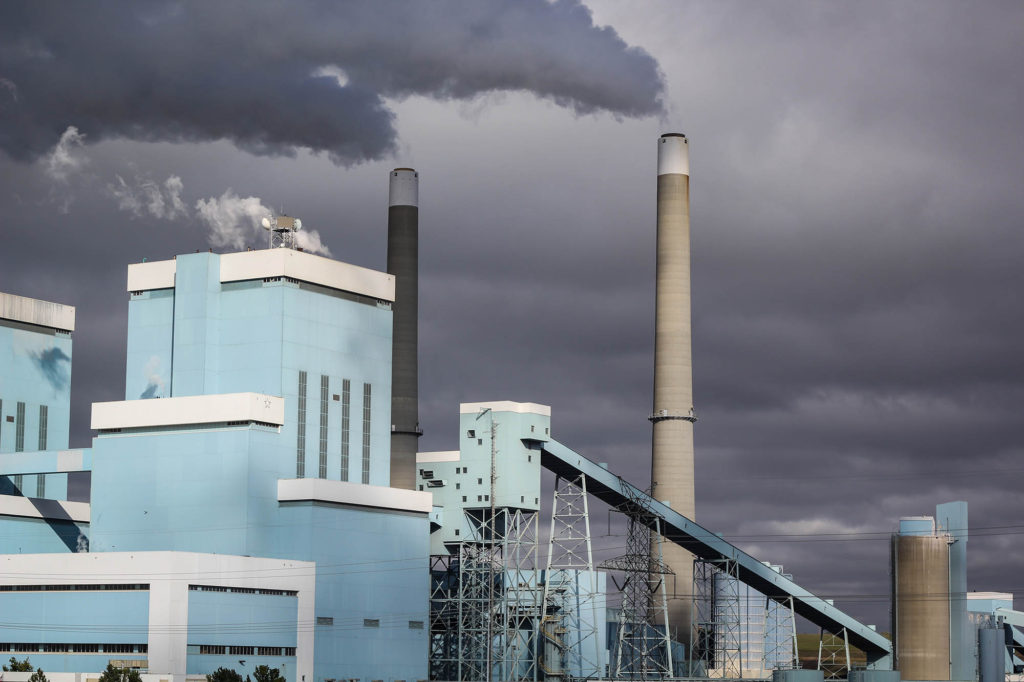North Dakota
North Dakota lawmakers throw lifelines to the coal industry

N.D. — Preserving North Dakota’s declining coal industry was a priority mission for state lawmakers when they arrived in Bismarck on Jan. 5, and in the months since, the Legislature has taken historic steps to slash taxes on coal producers and rewrite regulations to keep the fossil fuel source economically competitive.
Across the United States, coal power is on the wane. Hundreds of coal-fired power plants have been shuttered or slated for retirement in the last decade in the face of competition from cheap natural gas and an accelerating national transition toward renewable resources such as wind and solar.
For North Dakota, a combination of recent events have helped to catapult the future of coal power to the front of state interests. With the inauguration of President Joe Biden came the start of a new, climate-focused administration prompting North Dakota to redouble efforts to protect its key fossil fuel sectors. Costly electricity blackouts in Texas and other parts of the country in February escalated existing partisan battles over the future of fossil fuels on the power grid.
And last year’s announcement that North Dakota’s largest coal-fired power plant, Coal Creek Station, was slated for closure in 2022 sent officials racing to rescue the flagship plant and stave off a chain reaction for an industry that employs more than 3,500 people in the central part of the state.
“What has manifested itself with the Coal Creek situation with legislators is the real urgency that the industry has been feeling for a while,” said Beulah Republican Sen. Jessica Bell, an environmental manager for North American Coal and one of the leading coal advocates in the Legislature. The prospect of an end date for the 1,100 megawatt facility forced the reality that “now was the time to act,” Bell said.
An unprecedented session
The result was an unprecedented session for North Dakota coal. Bell noted that she tracked close to 20 bills aimed at boosting the coal industry this session, the bulk of which have since been signed into law. That effort has been criticized by some North Dakota environmentalists and small government conservatives who characterize it as a misguided attempt to bail out a dying industry. But for most of North Dakota’s Republican-dominated legislature, propping up coal was a needed move to level the playing field against growing federal and private-sector support for renewable energy.
Among their most significant steps, lawmakers passed House Bill 1412, signed into law by Gov. Doug Burgum on April 23, providing a five year “tax holiday” to the coal industry totaling more than $100 million. An earlier version of that bill outlined a somewhat smaller tax break, but lawmakers scaled it up toward the end of the session.
Lt. Gov. Brent Sanford, who serves as the governor’s office liaison on many energy issues, said he expects this tax break will only be a short-term fix and noted that coal power will have to find ways to adapt into a cleaner resource fast if it’s going to survive Biden administration policies and the growing environmentalist tide.
“The clock is ticking,” Sanford said. “It’s time not only for those that are concerned about climate change and Paris Accords or all that. With this administration, I don’t know how you go through four or eight years of expecting to hold the line.”
Hopes riding on carbon capture
North Dakota’s lofty ambition to sustain the coal industry with emerging carbon capture technology underpinned several of the Legislature’s coal-boosting proposals. On Monday, April 26, Burgum signed House Bill 1452, establishing a $25 million grant and loan fund under a new Clean Sustainable Energy Authority, an energy industry board aimed at backing low emissions projects in the state.
While the grants and loans from the $25 million fund could go to projects across the energy sector, the Clean Sustainable Energy Authority is also likely to oversee a credit line of up to $250 million. Republican leadership has said that money is intended to lift Project Tundra, the $1.1. billion carbon capture venture attached to a coal plant in central North Dakota, over its fundraising hump.
Another bill signed into law waives the state’s sales and use tax for the storage of carbon dioxide, and a third allows for utility companies to recover costs for carbon capture — both proposals intended to foster a carbon storage industry in North Dakota. Carbon capture technology is still in its infancy and unproven at scale, but North Dakota officials hope that it could be a vehicle to make the state’s coal industry both cleaner and more economic for the long-term.
Coal vs. wind
Even before February’s Texas power grid failure, North Dakota lawmakers were locked in debate with the state’s large investor-owned utilities over the future of coal on the state’s power grid. These negotiations — and a few of the proposals brought by lawmakers this session — highlighted the sometimes adversarial relationship between coal and renewable energy.
Limitations on the North Dakota power grid mean that ascendant wind energy and coal power, which accounted for more than 60% of North Dakota’s power in 2019, are increasingly competing for space in the electricity markets. With many large utility providers around the country prioritizing the addition of renewable power sources, lawmakers looked for regulatory policies this session that would protect coal’s current hold on the grid.
One recently signed proposal, Senate Bill 2313, allows state regulators to assign a value to the qualitative benefits of “base-load” generation, a term sometimes used to describe 24/7 power sources like coal, as opposed to “intermittent” sources like wind and solar. Lawmakers butted heads with utility providers over that idea, but Bell said she was pleased with the compromise that emerged, since it put a coal-friendly regulatory framework on the books and laid groundwork to add more teeth in the future.
But Bell said she views the current headwinds to coal power as temporary. When it comes to financial lifelines, she said she hopes that the Legislature won’t have to renew industry tax breaks over the longer-term.
“I hope that this is temporary. I see it as temporary. I intend it as temporary. But I also didn’t see this coming,” she said.





